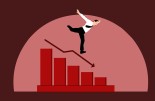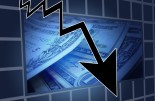La Française: Should we fear a wage-price spiral?

Is aggressive increase in interest rates justified and is a wage-price spiral, so feared by central bankers, likely to take hold?
Although the negative correlation between unemployment and inflation is not necessarily clear all the time, the question remains over whether the aggressive increase in interest rates - the main tool of central banks in the fight against inflation - is entirely justified, as it could drag the global economy into recession and unnecessary job losses, asks La Française today. Is a wage-price spiral, so feared by central bankers, likely to take hold?
Wage-price spirals unlikely?
In its October 2022 World Economic Outlook, the IMF's analysis of situations similar to 2021, when inflation was rising and wage growth was positive but real wages and the unemployment rate were stagnant or falling, was reassuring. The IMF showed that ‘given that inflationary shocks are originating outside the labour market, falling real wages are helping to slow inflation, and monetary policy is tightening more aggressively, the chances of persistent wage-price spirals emerging appear limited’.
The latest report from the International Labour Organization (ILO) also noted that ‘in high-income countries, real wage growth has been lower than productivity growth since 2000. Whereas the sharp decline in labour productivity growth during 2020 momentarily reduced the gap, the erosion of real wages in the first half of 2022, combined with positive productivity growth, has once more increased the gap between productivity and wage growth’.
This study states that in 2022, the gap between the growth in productivity and that of wages reached its highest point since the beginning of the 21st century, with productivity growth 12.6 percentage points above wage growth. It would therefore appear ‘to be scope in many countries for increasing wages without fear of generating a wage–price spiral’.
Lower inflation over the long term
Finally, economists point out that the decline in the working population will be a factor contributing to lower inflation over the long term. With lower income growth, consumer spending stands to fall, and the labour market should rebalance through a lower natural equilibrium unemployment rate (NAIRU, Non-Accelerating Inflation Rate of Unemployment, i.e., the lowest unemployment rate that can be sustained without causing inflation to rise).
The NAIRU has declined gradually since the late 1980s, from 6.3% down to 4.4% as it currently stands. It should drop to 4.25% by 2032 according to the Congressional Budget Office.










